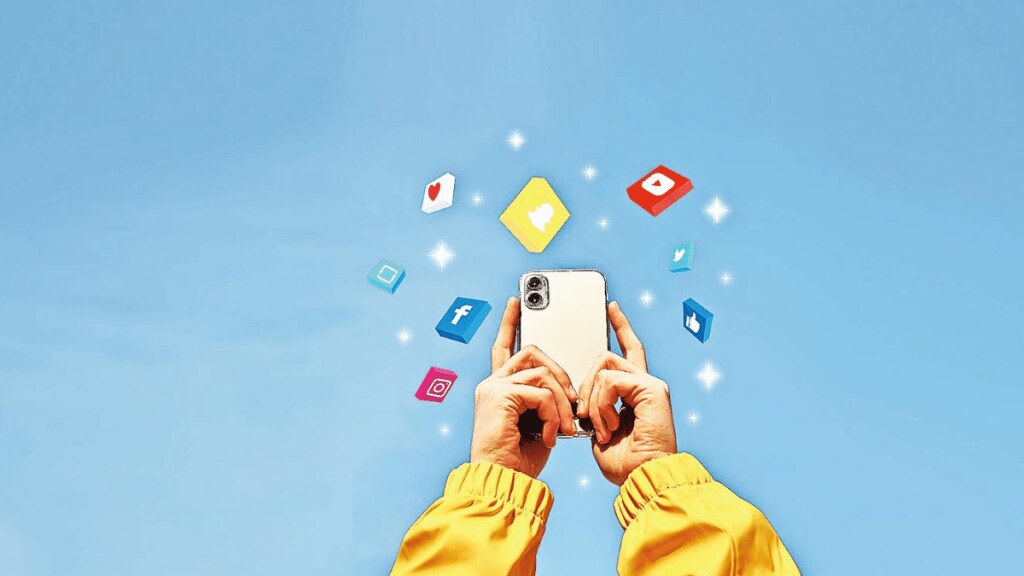As AI and automation invade the advertising landscape, some might wonder if the future of influencers or content creators is secure after all.
Wait a little.
As per a report by EY and BigBang.Social, 12% of 1 million content creators who are monetising their content earn a monthly income of anywhere between Rs 1 and 10 lakh, and nearly 77% of influencers reported income growth. The report estimates that there are around 3.5 to 4 million influencers in the country, including those who are not yet monetising their content.
There you have it. Even during the pandemic, content creation was simply a side hustle. In the last couple of years, however, content creation has established itself as a serious profession with influencer earnings making a 2x jump, encouraging more and more creators to pursue a career in content in earnest.
What has worked in their favour is the widespread adoption of social media platforms by brands and consumers alike. Says Karan Pherwani, vice-president of influencer marketing firm Chtrbox: “The proliferation of smartphones and affordable internet access have caused digital content consumption to surge. This has led influencers to capitalise on and attract larger audiences, and secure brand partnerships.” The rise of specialised influencers who cater to niche audiences has also been a key driver of influencer earnings.
If the momentum continues, the industry will reach Rs 2,344 crore in 2024, up from Rs 1,500 crore in 2022. It is expected to reach Rs 3,375 crore by 2026 at a CAGR of 18%.
While categories such as fashion, beauty and FMCG have typically been leading the charge as the big spenders on influencer marketing, segments such as technology, finance, real estate and healthcare have also jumped on board over time. Ramya Ramachandran, founder & CEO of content to commerce firm Whoppl, says influencer marketing has come to consume the biggest chunk of digital marketing budgets today. “Many of our clients allocate around 20-30% of their digital marketing spends to influencer collaborations, and that number has been climbing steadily,” says Ramachandran. These collaborations have evolved from simple product placements to more immersive experiences, such as co-creation of content, offering deeper consumer engagement and value to brands.
In a way, the pandemic was the pivotal year. Prior to it, brands allocated no more than 5% of their digital budgets to influencer collaborations. The pandemic forced a diversification of platforms allowing both influencers and brands to move beyond the likes of Instagram and dabble with YouTube Shorts, MX TakaTak, Moj and Josh. That said, YouTube and Instagram remain the leading platforms for influencer collaborations. Tusharr Kumar, COO of OML Entertainment, says brands gravitating towards influencers is a global trend. “With AI, analytics and other available tools, it is easy to find the right influencer for a brand while minutely analysing every step of a campaign to increase ROI,” says Kumar.
Hurdles aplenty
Unmisha Bhatt, co-founder and chief strategy officer at Tonic Worldwide, points out that the low entry barriers have allowed the number of content creators to reach an all-time high, resulting in overcrowding. What inevitably follows is a “price war” among influencers, and so the industry is at risk of saturation and a gradual decline in influencer earnings.
Another factor that can impact growth is the new regulation guiding the space. “Declaring the content as an ad or collab has suddenly taken away the ‘word of mouth’ value since consumers no longer see it as a genuine recommendation,” says Bhatt. “The only difference in ads versus influencers is storytelling versus advocacy but with this declaration, advocacy gets weaker.”
Influencers’ earnings are shaped by different platform algorithms. These can impact content reach and engagement, thus affecting current and prospective branded collaborations, says Amyn Ghadiali, president of business & integrations at GOZOOP Group. Influencers therefore need to find ways to reduce their dependence on one or a small set of platforms. One way that creators can do this is by diversifying their content and strategically posting content across platforms. “Consciously selecting brands and building authentic relationships with their followers could help influencers ensure long-term success,” he adds.


